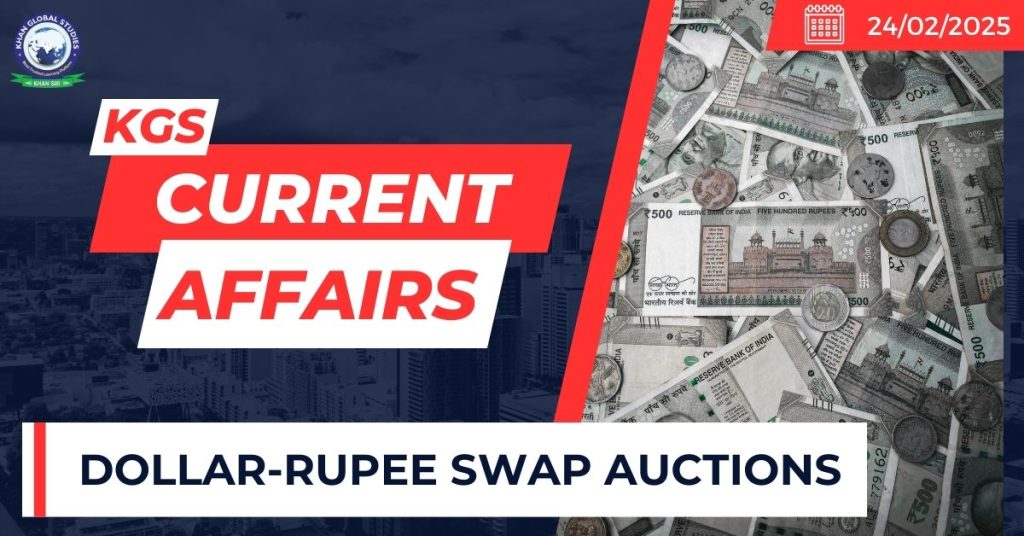Context:
The RBI recently conducted $10 billion dollar-rupee buy-sell swap to inject rupee liquidity in the Indian economy.
More on the News
- The move will inject ₹86,000 crore into the banking system to address liquidity shortfalls.
- Indian banks are facing a liquidity deficit of Rs 1.7 lakh crore as of February 20, 2025.
- The swap auction will be for a tenor of 3 years (March 4, 2025 to March 6, 2028).
About Dollar-Rupee Swap Auctions
- It is a forex tool by the RBI to manage liquidity in the economy and stabilise currency volatility.
- In the ‘first leg’, banks sell dollar (USD) to the RBI and receive Indian Rupees (INR).
- In the ‘reverse leg’, banks buy back USD from RBI at a pre-determined price at the end of the swap period.
- RBI utilises it foreign exchange (forex) reserves for this.
- Market participants will bid based on the premium they are willing to pay to the RBI, quoted in paisa terms to two decimal places.
- The minimum bid size is USD 10 million, and bids must be in multiples of USD 1 million.
Reasons for the Liquidity Deficit
- RBI’s Forex Interventions: By selling dollars to stabilise the rupee, RBI soaks up rupees from the banking system.
- Advanced Tax Payments: Corporates paying advanced taxes to the government also drains liquidity.
- Changed Public Funding Pattern: Since 2023, funding for centrally sponsored schemes are routed directly to scheme-specific accounts on the SNA Sparsh portal instead of being parked in state government accounts in public sector banks.
- Cash withdrawals: Due to festive season, people have been taking out cash from current, savings, and term deposits.
Implications of the Swap Auctions
- Boost Liquidity: RBI will inject rupee into the banking system and while sucking out dollars.
- Stabilise the Rupee: Reduces depreciation pressure on the rupee caused by outflow of foreign capital from Indian stock markets.
- Enhance Forex: RBI’s dollar reserves will be augmented which is critical for its interventions in the forex market.
- Policy Rate Transmission: RBI’s policy stance will have effect on interest rates in the money market only if the liquidity deficit is made neutral through liquidity infusion.
- Economic Growth: More liquidity will induce banks to lend more, thereby promoting consumption and investment.
- Hedge Against Inflation: Inflationary risk is managed as there is a future obligation to return INR to the RBI.

